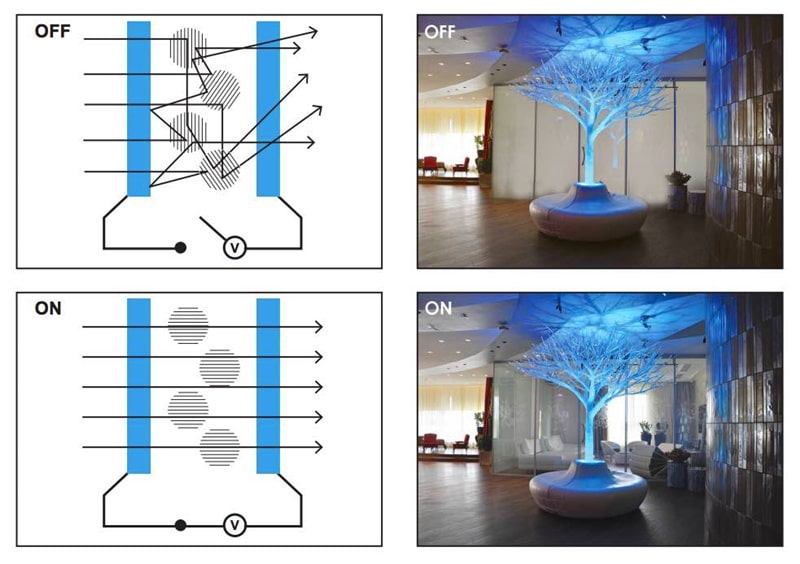Glass has been used in building structures since medieval times to enhance the beauty of the buildings. Even today, glass remains a strong and reliable material for building construction. The unique feature of glass is its transparency, which allows light to pass through it. However, this transparency can be controlled by using tinting options, such as black glass, blue tint, or gold-colored glass. The tinted glass not only adds to the aesthetics but also reduces the amount of light passing through it. But, if the glass is clear or transparent, the only way to make it opaque is by adding curtains.
However, the concept of curtains may not always be practical, especially when privacy is a concern. This is where the new technology of smart glass comes in. Smart glass is created by fusing a smart film between two glass layers or attaching it to one side of the glass using special adhesives. When connected to a power source, the film can turn the glass from clear to opaque, and vice versa.
Smart glass uses a Polymer Dispersed Liquid Crystal (PDLC) film, which has randomly dispersed particles. When electricity is passed through this film, the particles align themselves in a fixed pattern, allowing light to pass through and making the glass transparent. When the power is turned off, the particles go back to their random arrangement, blocking the light and making the glass opaque.
The three key components that make the glass smart are the PDLC film, power source, and the property of the particles in the film to align themselves when electricity is passed through them. The technological advancements in smart glass have made buildings and automobiles more efficient by limiting the amount of sunlight that comes in, which helps in maintaining a consistent temperature. This, in turn, reduces the need for heating or cooling systems, leading to greater efficiency and power savings.

- PDLC Film:
- Polymer Dispersed Liquid Crystal film (PDLC) is the primary component used in smart glass.
- This film contains particles that are dispersed in a random order until electricity is passed through them.
- When a power source is connected, the particles align themselves in a pattern that allows light to pass through, making the glass transparent.
- When the power is turned off, the particles return to their random pattern, blocking the light and making the glass opaque.
- Power Source:
- A power source is required to operate smart glass effectively.
- When the power source is turned on, electricity passes through the PDLC film, causing the particles to align and make the glass transparent.
- When the power source is turned off, the particles return to their random pattern, blocking the light and making the glass opaque.
- Particle Properties:
- The particles in the PDLC film align themselves in a specific pattern to allow light to pass through when a power source is connected.
- These particles return to their random pattern when the power source is turned off, making the glass opaque.
- The properties of these particles are what make the glass smart, allowing it to switch from opaque to transparent based on the presence or absence of a power source.



